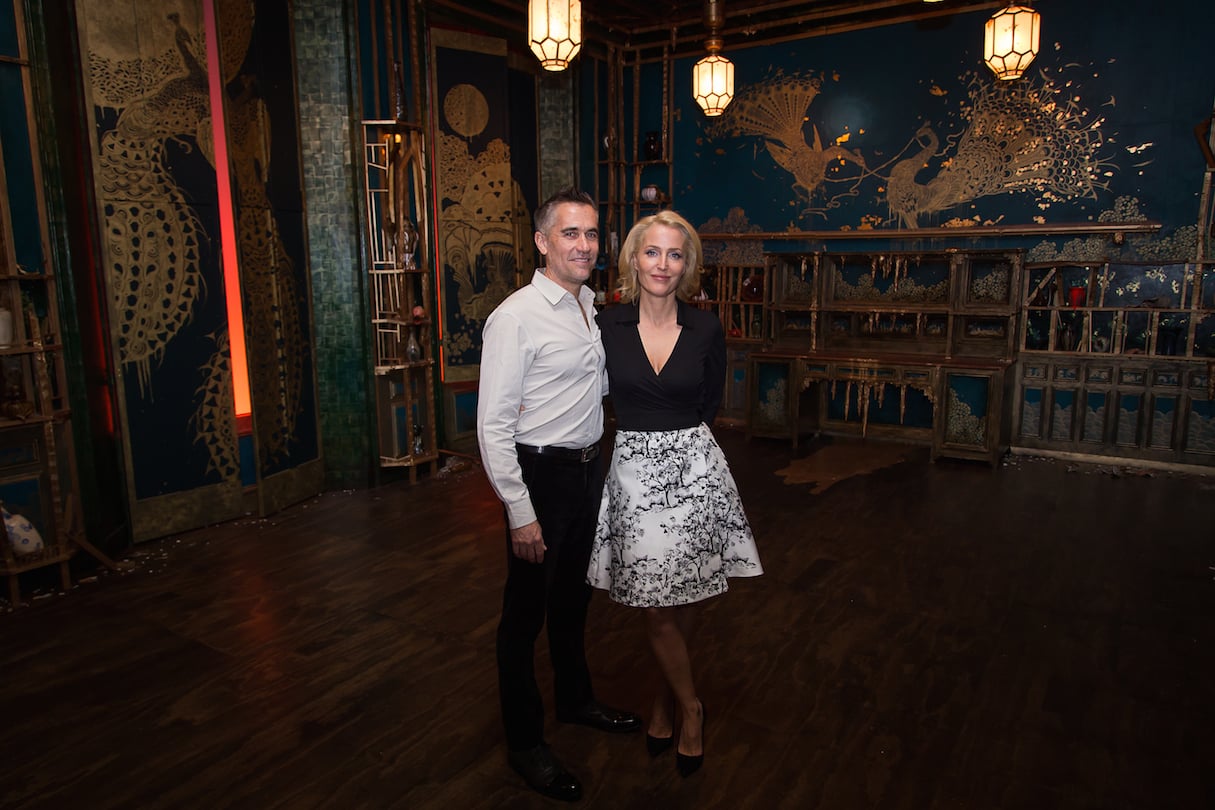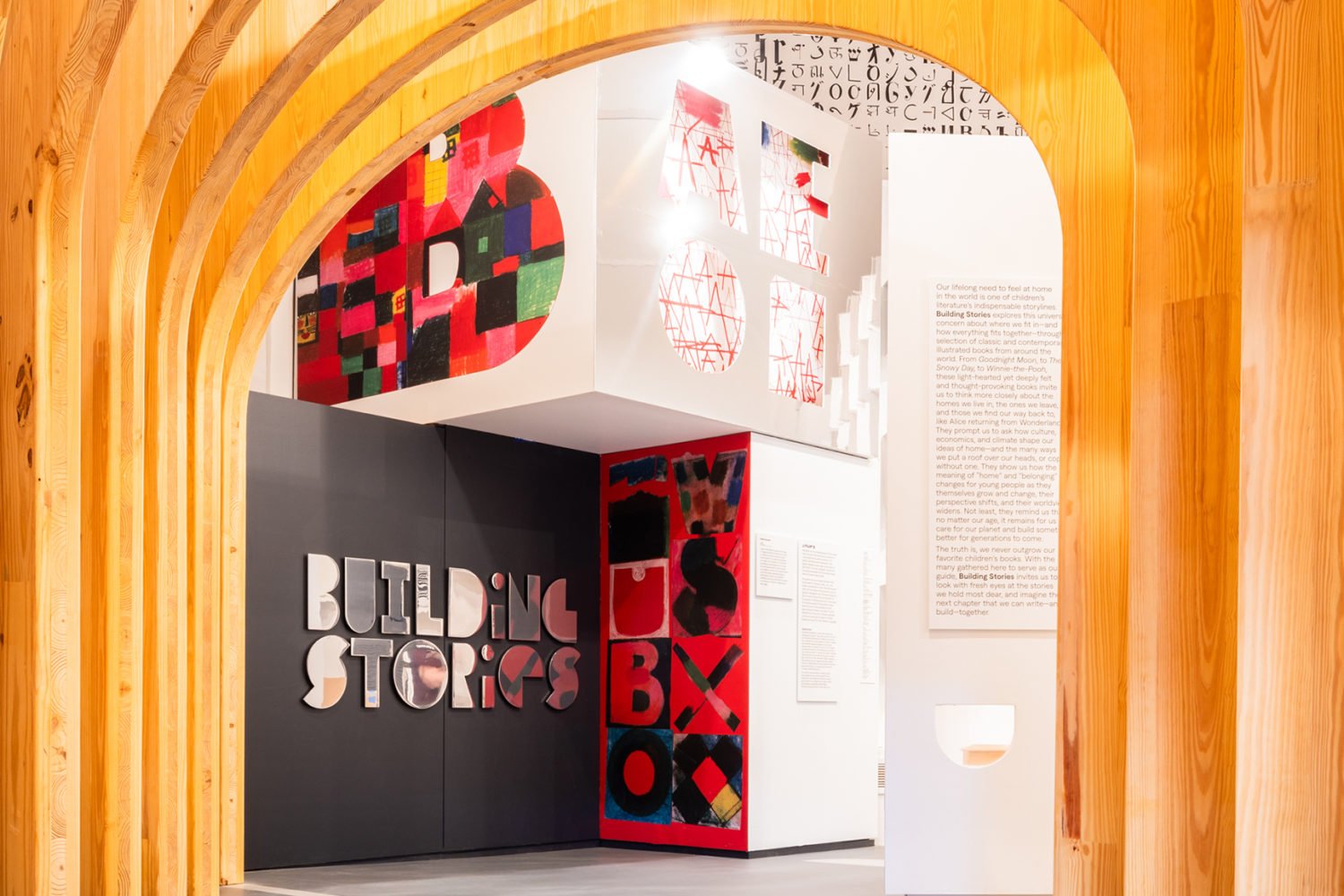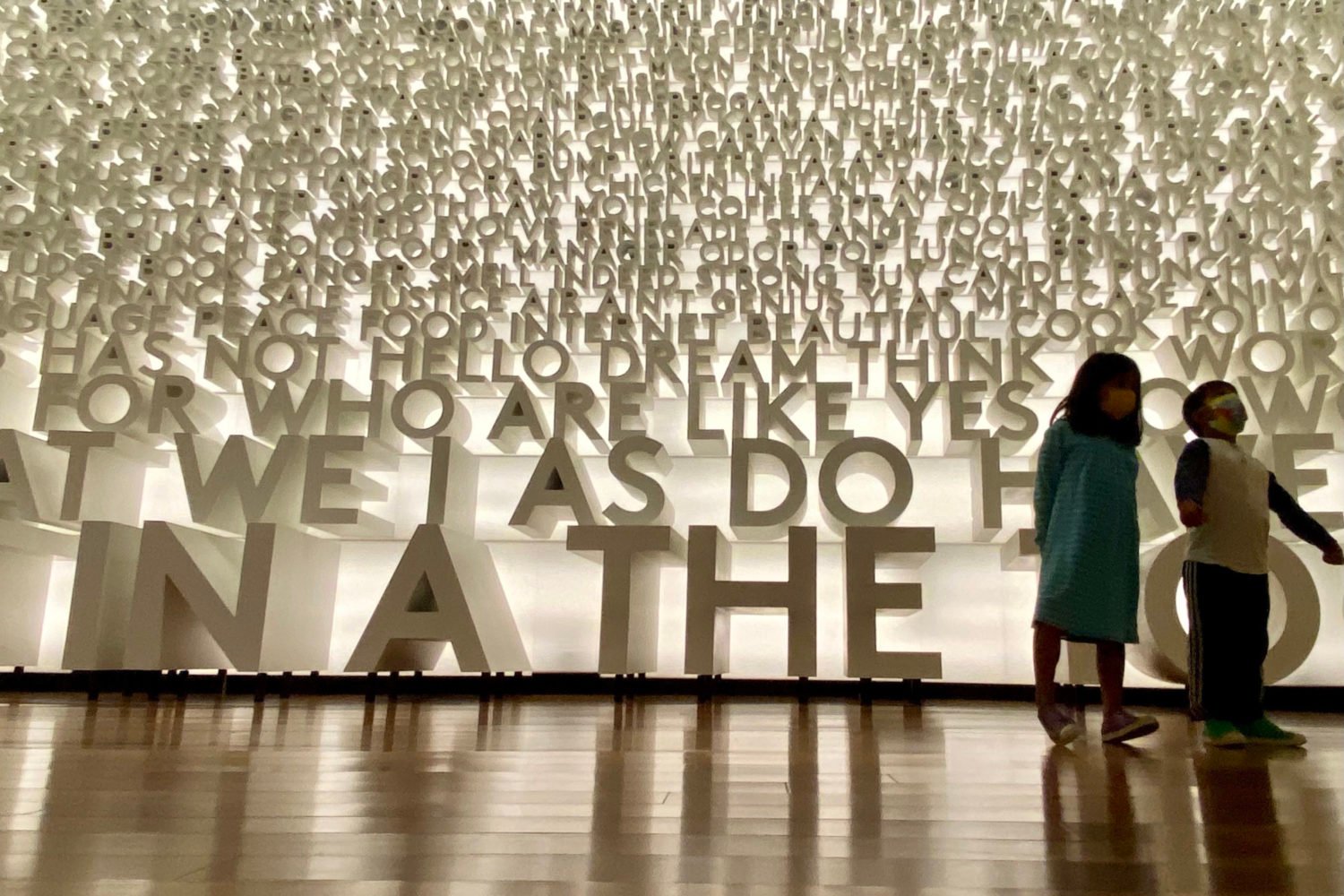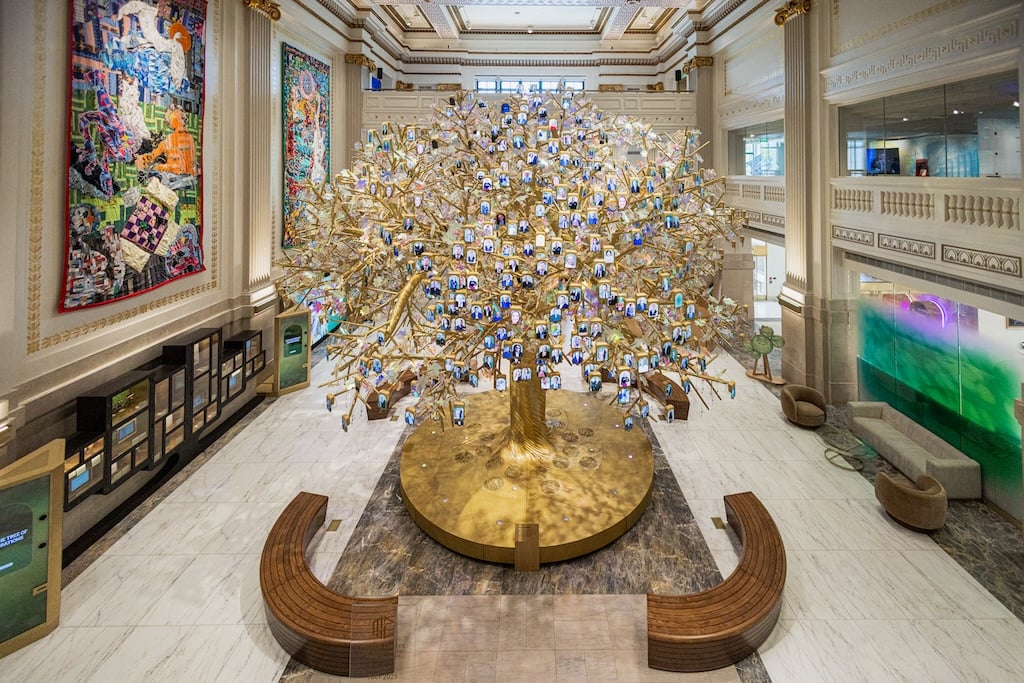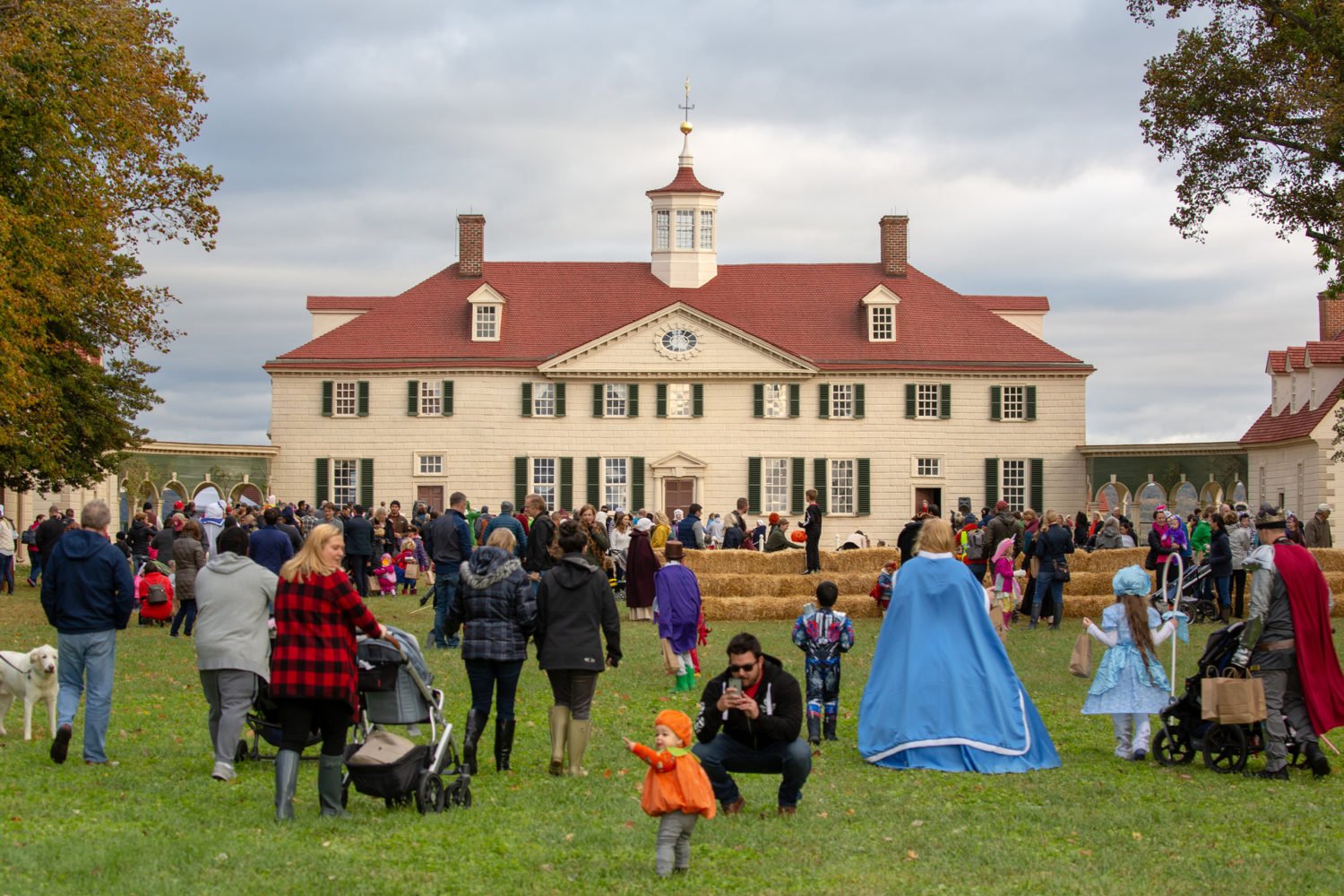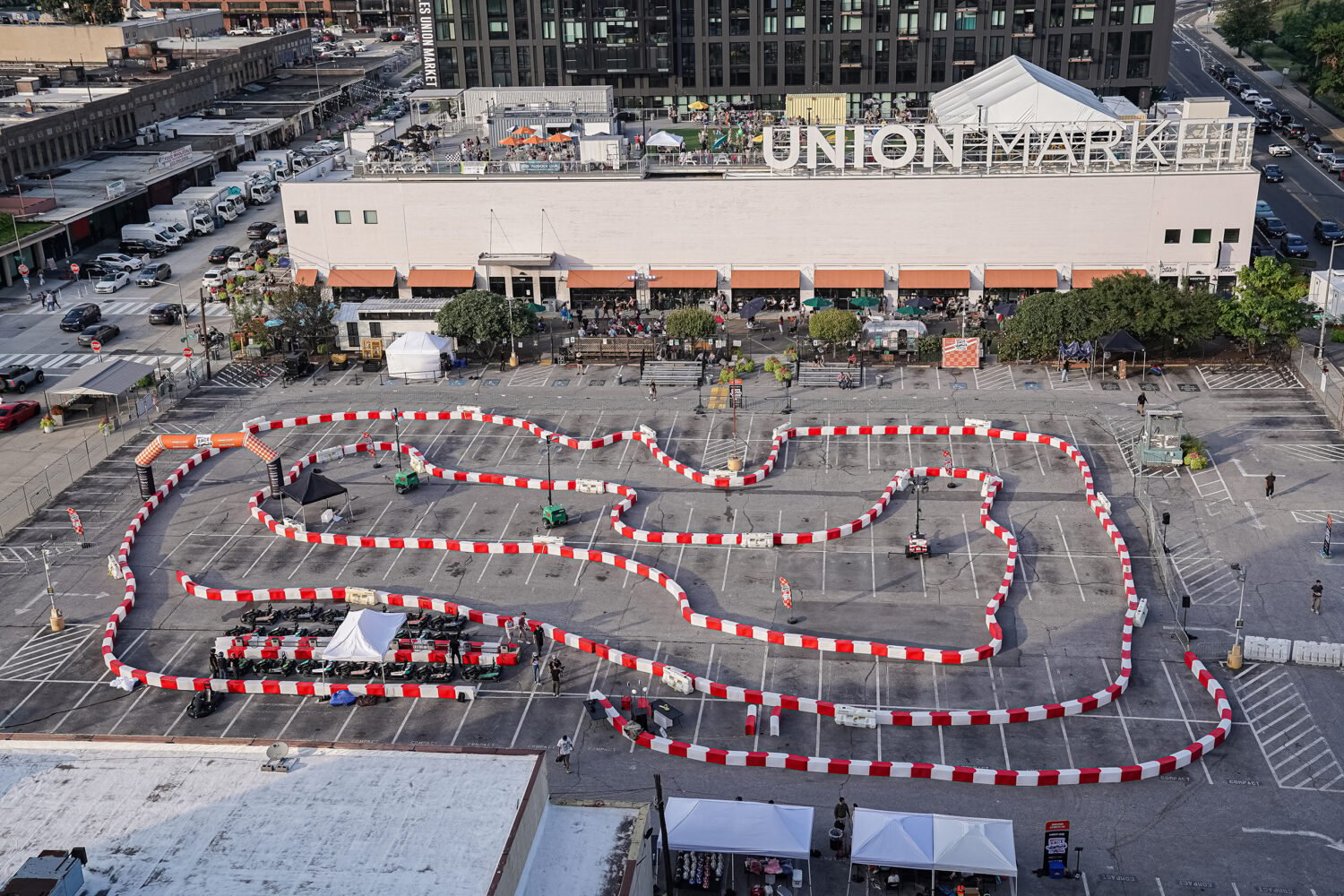Gillian Anderson isn’t in DC to talk about aliens. Fox’s reboot of The X-Files is airing next year, but she isn’t here to talk about acting, kissing co-star David Duchovny, or anything like that. She’s here to talk about art.
Anderson is in town supporting her close friend, Darren Waterston–an artist she met 20 years ago while filming The X-Files in Vancouver. Waterston’s show, Filthy Lucre, opens at the Arthur M. Sackler Gallery on May 16. His stunning installation takes the iconic Peacock Room–on view next door at the Freer Gallery of Art–and turns it into a ruin of blue-and-gold. Broken pottery, shards of wood, and pools of paint symbolize destruction and excess, as well as the complicated relationship between money and art.
On May 15, Anderson is co-hosting an exhibition gala benefitting the museum. Tickets cost $1,000. Don’t have that kind of cash? Don’t fret. Washingtonian sat down with Anderson and Waterston to talk art, friendship, and Filthy Lucre.
You met at one of Darren’s art openings in Vancouver, while Gillian was filming The X-Files. Take us back to that time. What led you to strike up such a close relationship?
GA: Darren was exhibiting in Vancouver, but predominately living between Vancouver and an island off the coast. He had a studio there, and that’s where he was painting. While I was doing the series, I was going up there on the odd, long weekend with my daughter and visiting him on the island. It was a place to shuck oysters and walk barefoot on the beach.
DW: It was really art that brought us together. That was our common thread. Gillian has an amazing contemporary art collection and is just incredibly rigorous and thoughtful about how she engages with art. We help educate each other about our discoveries and what we see. That’s a wonderful part of the friendship.
When you say you educate each other, how does that manifest itself in the day by day parts of your relationship?
DW: We go to museums and art shows together. Gillian says, ‘We’ve got to check this out’ or ‘Look at this artist.’ If something catches Gillian’s eye, or she gets excited about something, she always lets me know.
GA: And vice versa. Darren’s art studio is filled with nature, and part of the time we spent on the island was spent in nature, coming across wasp nests or mold or dead hummingbirds. It was a very immersive, creative, organic experience. It was as much about being present in the space as it was about the education of the creative process.

Gillian, how did you start your contemporary art collection?
GA: The first paycheck I got from The X-Files, I bought a piece of art. It was a lithography by David Blackburn, a Canadian artist. It was a couple of whales breaching. The next ones were three of [Darren’s] pieces. Art has been a constant companion throughout my life. I live in one of the most amazing cities in the world for experiencing a diverse array of art–London. It’s a big part of my relationship with my daughter. We often go to galleries together. The amount of coffee table [art] books I have… It’s literally pathetic. There’s no room on the coffee table because they’re piled high with books.
Breaching whales, huh? How has your collection changed since then?
GA: It’s very diverse. I don’t have a lot of wall space that isn’t covered right now, and I’m not interested in stacking things. I do have storage, but I’m not sure if I agree with that. I want to enjoy what I invest in, and I try to manage the accumulation of material objects in my life. I struggle the most when art is concerned. It’s been a long time since I’ve actually collected something because of that reason. If it’s not going to be used or useful–and I consider a painting on the wall that I appreciate on a daily basis to be useful–then it doesn’t feel mindful for me to purchase it and stick it in a warehouse.
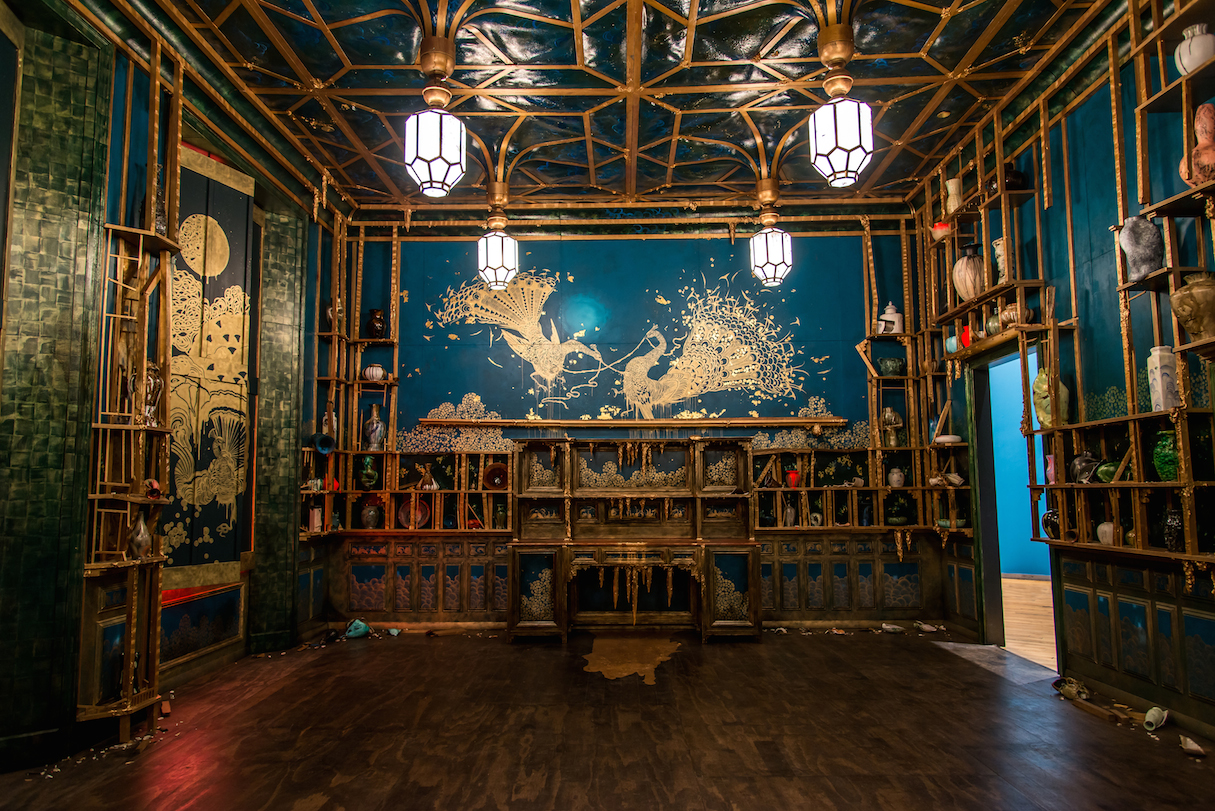
Collectors have different reasons for spending money on art. What’s your approach?
GA: There’s a certain level that I collect at. There’s a lot of photography in there, as well. My collection is less based on who a hot new artist is. It’s more about a passionate purchase. There are a couple of pieces that got away over the years that I still dream about. One was a Bill Viola piece–way, way in the beginning of his career. It was four video screens. I still dream about this piece.
DW: People collect art for very different reasons. There are some people who collect it purely for investment, and there are some who collect it purely for social status. And in the case of Frederick Richards Leyland–[the collector who inspired the Peacock Room by artist James McNeill Whistler]–he collected to amass all of this artwork as quickly as he had amassed all of his wealth. He wanted to find himself in a certain social status. He wanted to look as if he was discerning and had a particular intellectual and aesthetic point of view, but all of it was a pretense.
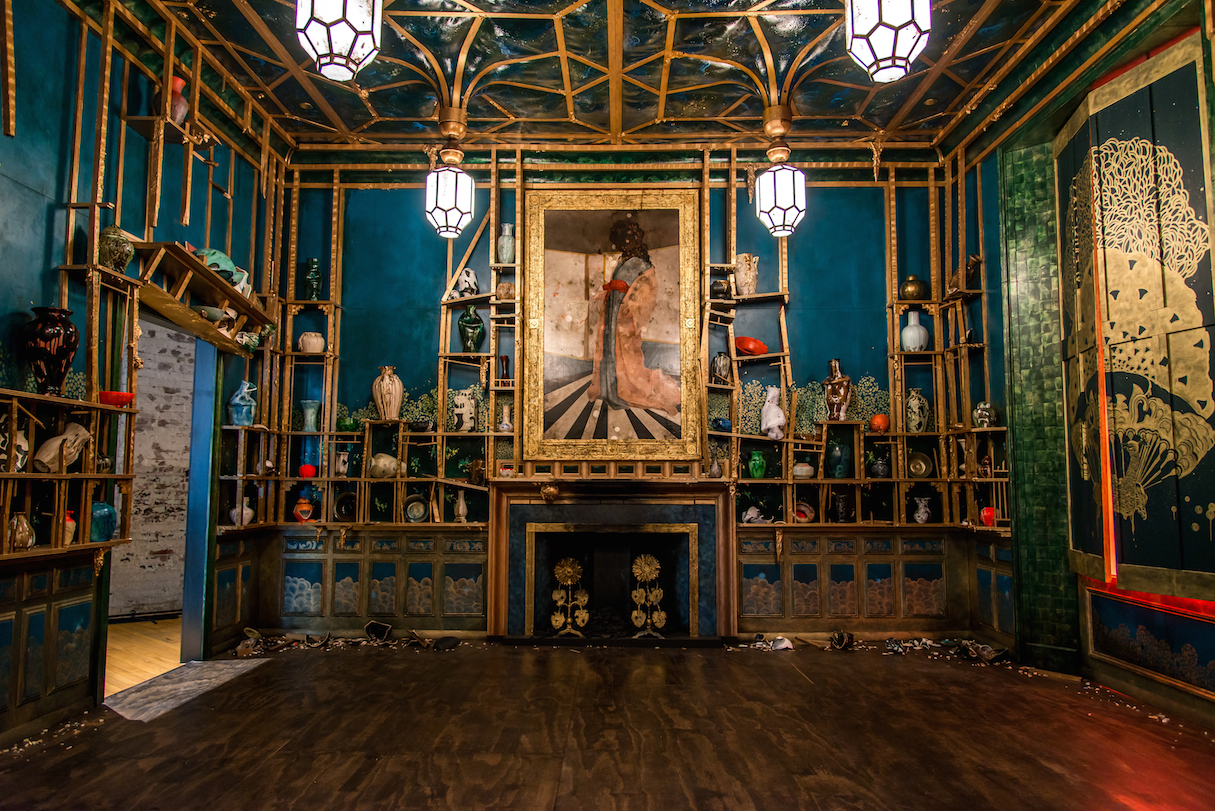
The relationship between art and money is just one of many themes in Filthy Lucre. What else does the piece mean to you?
DW: Filthy Lucre uses Whistler’s Peacock Room as its point of departure. but it’s a contemporary work of art that stands on its own accord. It uses themes of beauty and deformity–around creative forces and destructive forces, around volatility and instability, and the instability of beauty and the instability of capital. The instability all of it is reflected in this piece. The intention is two bring these two works of art–created in two different periods–to create a crossfire.
This interview has been condensed and edited for clarity. Darren Waterston’s Filthy Lucre opens May 16 at the Arthur M. Sackler Gallery.
Update: Star Trek’s Zachary Quinto has canceled his appearance at the Sackler gala. This article has been updated to reflect that change.

